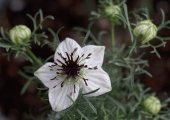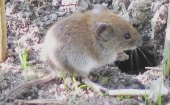
 8
8




The leaf, root, and fruit (berry) are used to make medicine. Blackberry is used for treating diarrhea, fluid retention, diabetes, gout, and pain and swelling (inflammation); and for preventing cancer and heart disease. It is also used as a mouth rinse for mild mouth and throat irritation.
Native Americans of the Apache, Chiricahua, and Mescalero tribes used the fresh and preserved fruit for food, and the wood shavings as a traditional eye medicine and a yellow dye for hides

or also known as nopal, opuntia and other names — is promoted for treating diabetes, high cholesterol, obesity and hangovers. It's also touted for its antiviral and anti-inflammatory properties.

Antioxidants and anti-inflammatory; Improving digestion; Enhancing memory and concentration; Neurological protection; Prevent brain aging; Cancer.; Protection against macular degeneration.

Fruits can be used as a Sichuan pepper substitute; leaves and bark chewed as a toothache or mouth pain remedy

Invasive plants are Earth's way of insisting we notice her medicines. Stephen Herrod Buhner
Everyone learns what works by learning what doesn't work. Stephen Herrod Buhner
 3
3




Herbal practitioner and author writing about sustainable harvest and use of medicinal trees and shrubs in a temperate climate. See her Medicinal Tree Woman newsletter at annestobart.substack.com.
 3
3




Real funny, Scotty, now beam down my clothes!
 1
1




 6
6




 3
3




Kirsten Nelson wrote:I live at 7000ft in the high desert as well, very short growing season, 13” of rain a year, cold nights (all of which as important factors to what grows)
Lif Strand
New Mexico USA
 3
3




Lif Strand wrote:
Kirsten Nelson wrote:I live at 7000ft in the high desert as well, very short growing season, 13” of rain a year, cold nights (all of which as important factors to what grows)
Sounds a lot like how I describe where I live in western NM except I don't call it high desert. Actually, I don't know what to call it. It's where grasslands meets pinon/juniper woodlands, and 13" of rain would be a lovely wet year but we haven't seen that much in a decade. Cold nights & short growing season? You bet. Last night 31°.
I used to be a great gardener, took it for granted. In the last couple of decades I've been taught not to take such things for granted at all.

 5
5




"Do the best you can in the place where you are, and be kind." - Scott Nearing
 1
1




Beth Wilder wrote:This is great stuff, thanks Anne, Anne, Kirsten, etc.! I must find some of this prickly ash...
Here are some other great medicinal plants that grow wild where we are, are introduced and are working, or look like they will work (seedlings surviving so far) here:
mesquite (leaves and gum are medicinal, pods are edible, deadwood is great fuel or to carve) desert willow (leaves and twigs are antifungal, flowers make good tea) Mexican elder (berries and flowers as medicine and food) oak (leaves and bark as medicine, acorns for food, galls for dyeing, etc.) black locust peach (leaf tea as medicine) black or Arizona walnut (I make a digestif liqueur from the green nuts) Lyceum spp./wolfberries/Goji (leaves of some species for medicine, berries as superfood) creosote (the desert's drugstore) hibiscus (calyces for tea) prickly pears (the inside of the pads can be used just like aloe, and both pads and fruits are very cooling, too much so if eaten in excess) yucca (root as medicine, blossoms of some and fruit of others edible) Passiflora incarnata (flowers and leaves for medicine) horseradish (roots as food and medicine) chiltepines and any other chiles (let thy food be thy medicine) rosemary lavender calendula cilantro sage oregano thyme peppermint bee balm/Monarda lemon balm anise hyssop chia horehound comfrey California poppy
 3
3




"Do the best you can in the place where you are, and be kind." - Scott Nearing
 2
2





|
I like my tiny ads with a little salt
Play Your Way to a Sustainable Lifestyle: Uncover Permaculture Principles with Each Card
https://gardener-gift.com/
|








